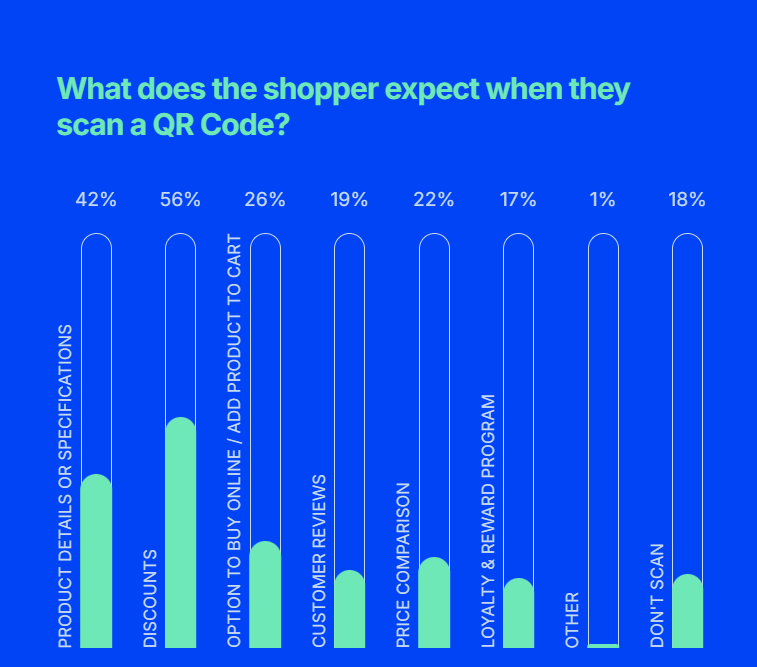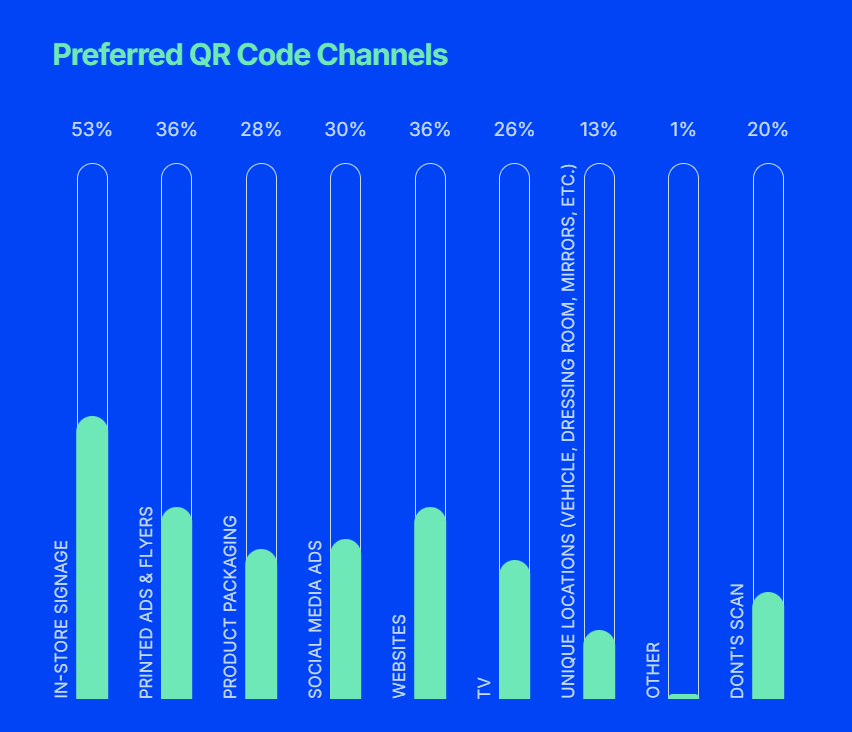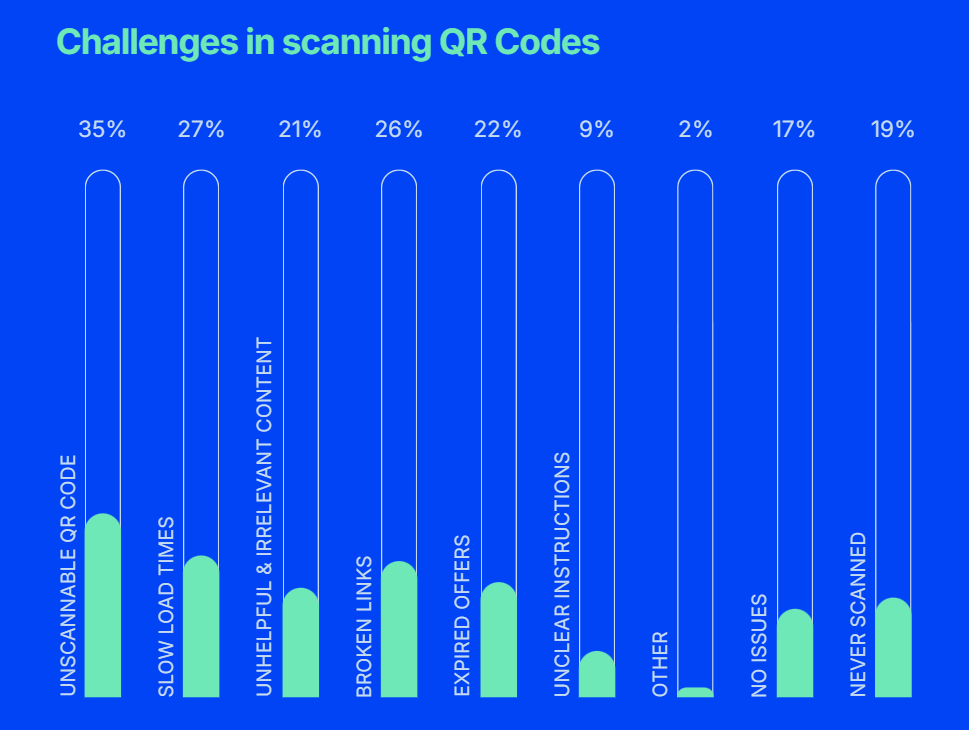What BFCM Teaches Us About QR Codes and the Future of Shopper Engagement

Every Black Friday and Cyber Monday, millions of shoppers unknowingly become test subjects in retail's largest behavioral experiment. Under the pressure of flash sales and ticking countdown timers, they reveal which digital touchpoints truly work and which are just industry wishful thinking.
This year, data reveals a particularly telling result: 74% of shoppers were ready to scan QR Codes when those codes delivered genuine value.
That finding matters because BFCM strips away the politeness bias that skews typical consumer research. When someone is frantically comparing prices across five different apps while a countdown timer ticks toward zero, they don't have patience for tools that don't immediately solve their problem. They either embrace a touchpoint or abandon it—no middle ground.
The QR Code's performance under these conditions signals something bigger than a seasonal trend. It represents the tool leveling up from experimental technology to essential shopping infrastructure. QR Codes didn’t just survive the BFCM stress test, they thrived, and what succeeds during retail's most demanding moments typically becomes the rulebook for the year ahead.
Lesson 1: Value extends beyond price
Discounts are the top individual expectation when someone scans a QR Code during BFCM, with 56% looking for promotional offers. But the scan isn’t only about price. Shoppers also expect substance: 42% want product details, 26% want the option to buy online or add to cart, and 19% look for reviews.

Marketers should lead with the offer but deliver more than the discount. Use the scan to apply the deal instantly, and then follow up with detailed product specifications, social proof, and a fast, frictionless path to checkout. That added value builds trust and turns curiosity into buying commitment without making shoppers work for it. Also learn how to optimize your BFCM QR Code strategy for higher conversions.
Takeaway: Design QR Code experiences that don’t stop at the offer. Pair every offer QR Code with product details, authentic reviews, price comparisons, or a fast checkout to turn bargain hunters into loyal customers.
Lesson 2: Omnichannel has become the default
Uniqode’s QR Code Marketing Guide for BFCM found that shoppers engage with QR Codes across multiple touchpoints: in-store signage (53%), printed ads and flyers (36%), social media (30%), and websites (36%). This confirms that no single channel owns the scan moment, and consumers are scanning wherever they find value.

That insight is important: shoppers expect a smooth journey across physical and digital (phygital) platforms. According to Deloitte’s 2025 US Retail Industry Outlook, omnichannel shoppers spend 1.5x more per month than those who shop through a single channel. That behavior underlines how a connected, cross-channel QR Code strategy can directly boost brand engagement and revenue.
For marketers, the path is clear: don’t silo QR Code deployments. Instead, build them into every touchpoint with unified messaging, design, and experiences. Whether the scan starts on a shelf tag, a flyer, or an ad, the experience should feel smooth and branded. That alignment strengthens trust and reinforces brand identity through every step.
Takeaway: Shoppers engage with QR Codes wherever they find them valuable—in-store, in ads, on social media, or on websites. Build QR Code experiences that maintain consistent quality and branding across all touchpoints while adapting content to match the context where shoppers encounter them.
Lesson 3: Different shoppers, different intents
BFCM data shows that QR Code engagement isn’t one-size-fits-all. Millennials (47%) and Gen Z (40%) are the most active scanners, often drawn by deals (up to 41%) and faster checkout (up to 17%). They also expect more depth from each scan. Nearly half look for detailed product information, and about a quarter check reviews before buying.
On the other hand, Baby Boomers remain cautious, with 52% unlikely to scan, but when they do, most look for straightforward value like clear discounts (38%) and concise product details (31%).

This makes one thing clear: When shoppers scan, they are signaling intent to learn more, to decide, or to buy. But if every QR Code journey looks and feels the same, it loses its impact.
Personalization transforms a generic scan into a meaningful experience. Tailored post-scan experiences, such as showing bundled products, loyalty program signups, or location-based offers, make the interaction feel both useful and personal.
For marketers, this means moving beyond static QR Code campaigns to dynamic QR Codes and treating every scan as a source of insight. Each dynamic QR Code can reveal behavioral data such as where the scan happened, who scanned, what offer or product triggered it, and how users interacted after scanning. These signals can refine targeting and timing, helping marketers match intent with post-scan experience.
For instance, shoppers scanning in-store may want instant reviews or quick checkout options, while those scanning from social media ads may be more receptive to bundles or early access offers.
Takeaway: Personalization is about using scan behavior to deliver relevant experiences. When QR Code experiences adjust based on where, when, and why a shopper scans, brands move from simply broadcasting offers to anticipating intent and delivering accordingly.
Lesson 4: Every scan is a trust exercise
When a QR Code leads to a slow-loading site, a broken link, or an expired offer, the result isn’t just a missed conversion but a credibility loss.
According to the report, 35% of shoppers said they encountered unscannable QR Codes, 27% cited slow load times, and 26% experienced broken links. These moments chip away at brand trust, and it is very difficult to earn back.

What shoppers expect post-scan is reliability. They want to feel safe and rewarded for their action. The report also shows that while 39% of consumers say they trust QR Codes, another 37% remain on the fence. That “uncertain middle” represents a big opportunity for marketers to turn hesitance into habit.
The fix doesn’t require overhauling technology; it starts with consistency. Clear branding on QR Codes, HTTPS-secured landing pages, and timely content updates make the experience feel intentional and safe.
A scan that works flawlessly every time builds subconscious trust. Over time, that reliability can turn into brand loyalty that makes shoppers come back long after the sale is over.
Takeaway: Trust is built in the details. When every QR Code loads fast, looks branded, and is secure, it tells shoppers your experience is dependable and reinforces credibility. That’s what turns first-time scanners into repeat buyers.
Lesson 5: QR Codes create an engagement loop
The BFCM QR Code Report shows that engagement doesn’t stop at the first scan. Over two-thirds of consumers (68%) say they’re open to scanning more QR Codes—31% definitely, and 37% if the experience delivers clear value. That openness signals not just interest, but sustained intent.

When shoppers see real value after scanning, whether it’s an exclusive reward, a loyalty sign-up, or a referral coupon, they’re willing to do it again. Each positive scan reinforces the behavior, turning QR Code interactions into a recurring engagement channel rather than a one-off campaign tool.
For marketers, this means designing QR Code experiences that guide shoppers toward what comes next. A post-purchase QR Code on packaging can unlock how-to videos or quick reorders. A scan at checkout can trigger loyalty sign up or feedback capture. Each of these moments keeps the connection alive long after the sale ends. The next step is learning how to turn those conversions into shareable advocacy moments using QR Codes that make customers want to spread the word.
Takeaway: QR Codes don’t just convert—they compound. Every positive scan raises the likelihood of the next one. Use QR Codes to build a measurable engagement loop, where each scan captures intent data, unlocks added value, and sets up the next interaction.
Today’s BFCM is tomorrow’s baseline
This year’s patterns point to a clear shift: shoppers reward brands that make QR Code scanning effortless, experiences seamless, and value unmistakable.
For retail marketers, the message is clear. The behaviors that surface under peak pressure are shaping retail’s new normal. The brands that understand them early will set the tone for what comes next. Find out how to extend these learnings into year-round QR Code engagement that sustains momentum long after peak season.
Explore the full BFCM QR Code Marketing Report for deeper insights into how shoppers engage, and what that means for the year ahead.
